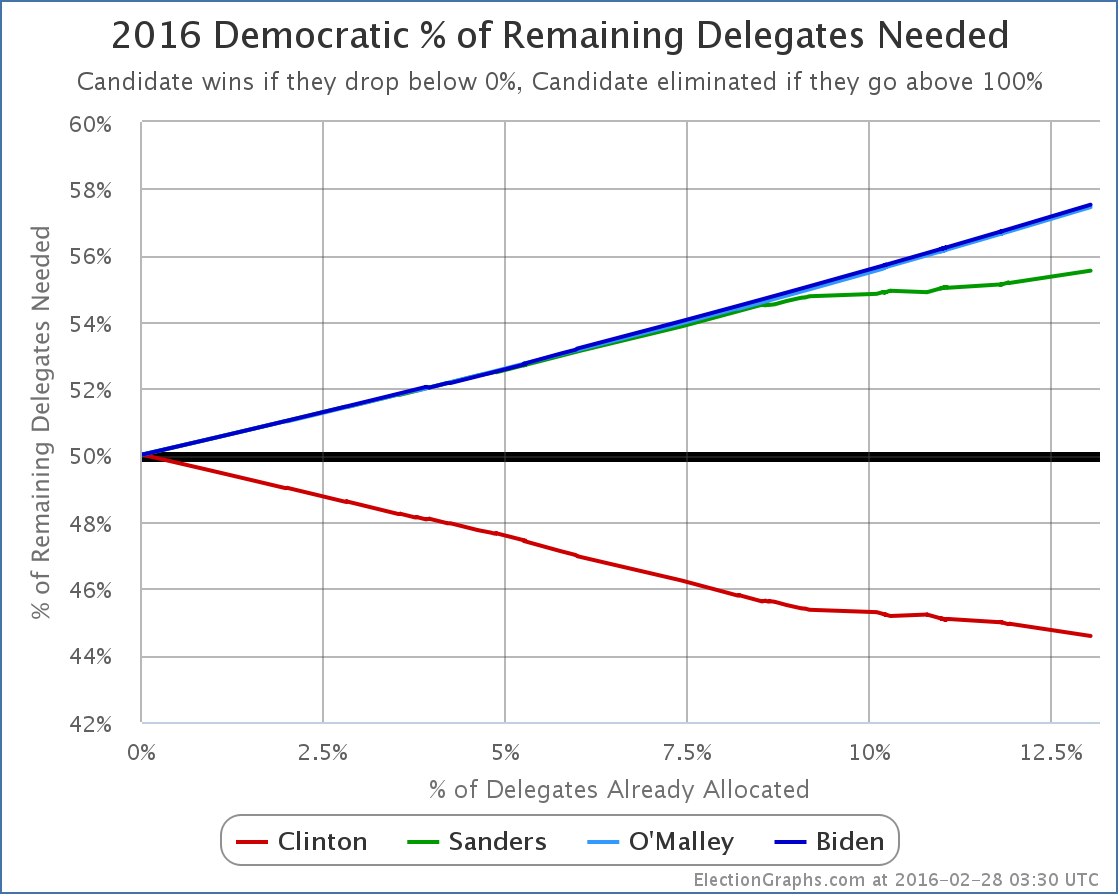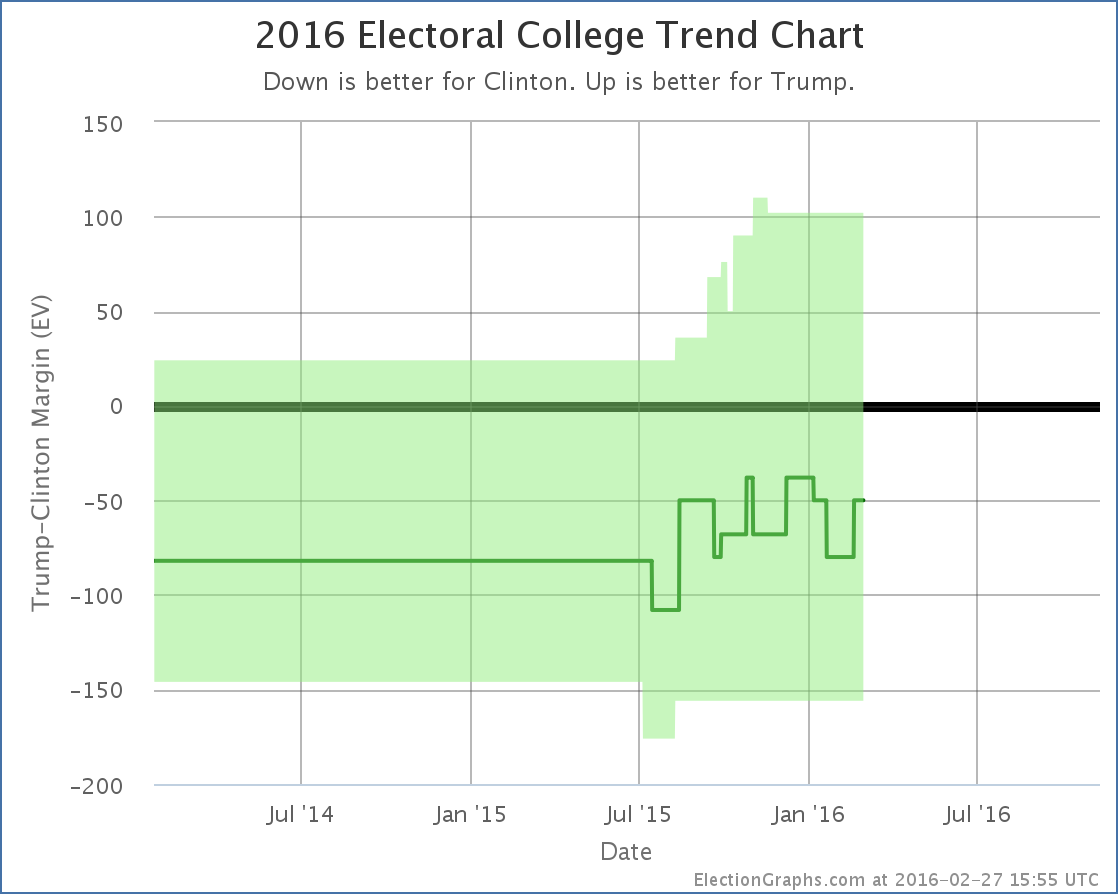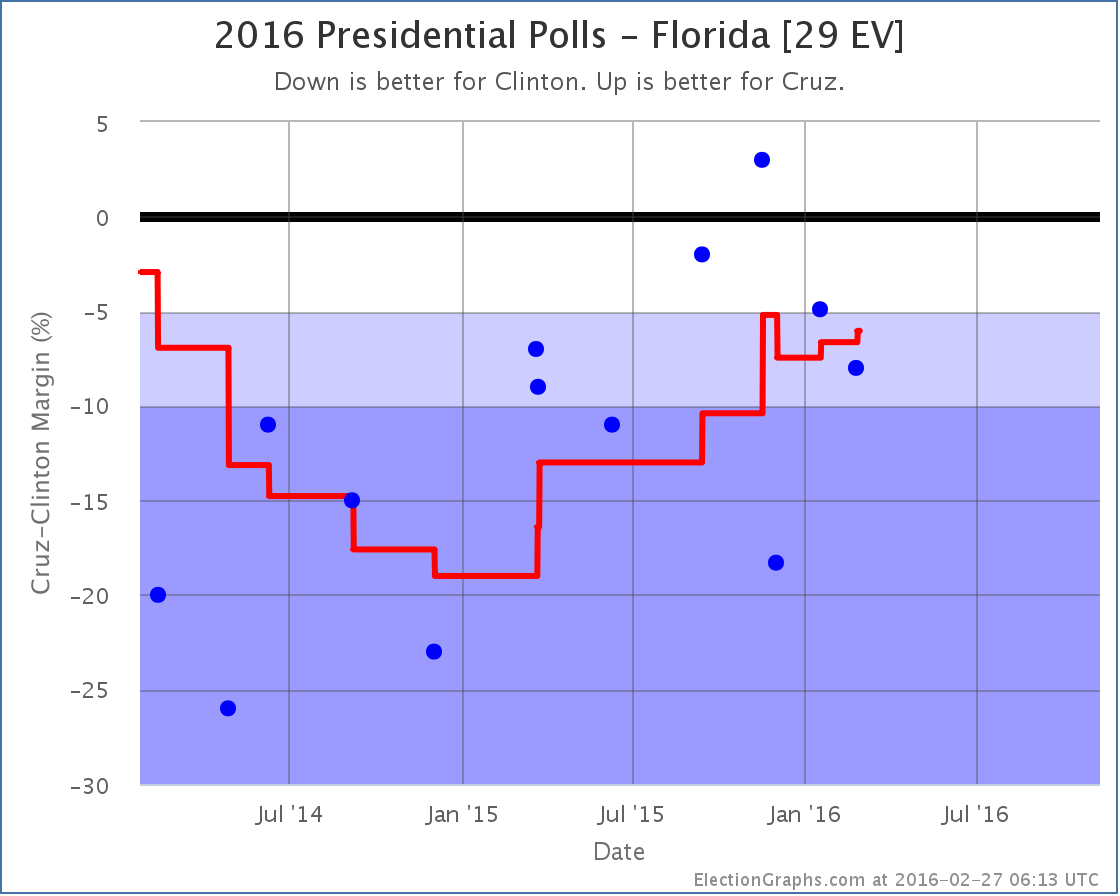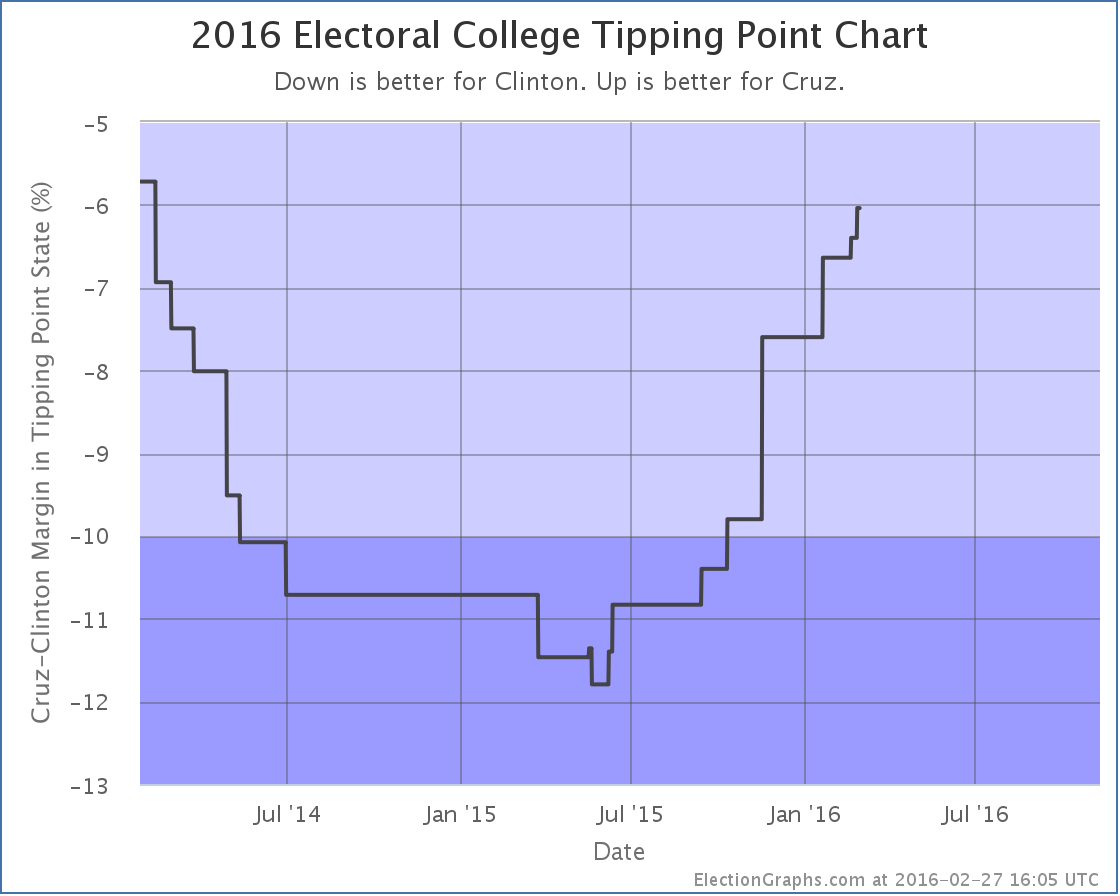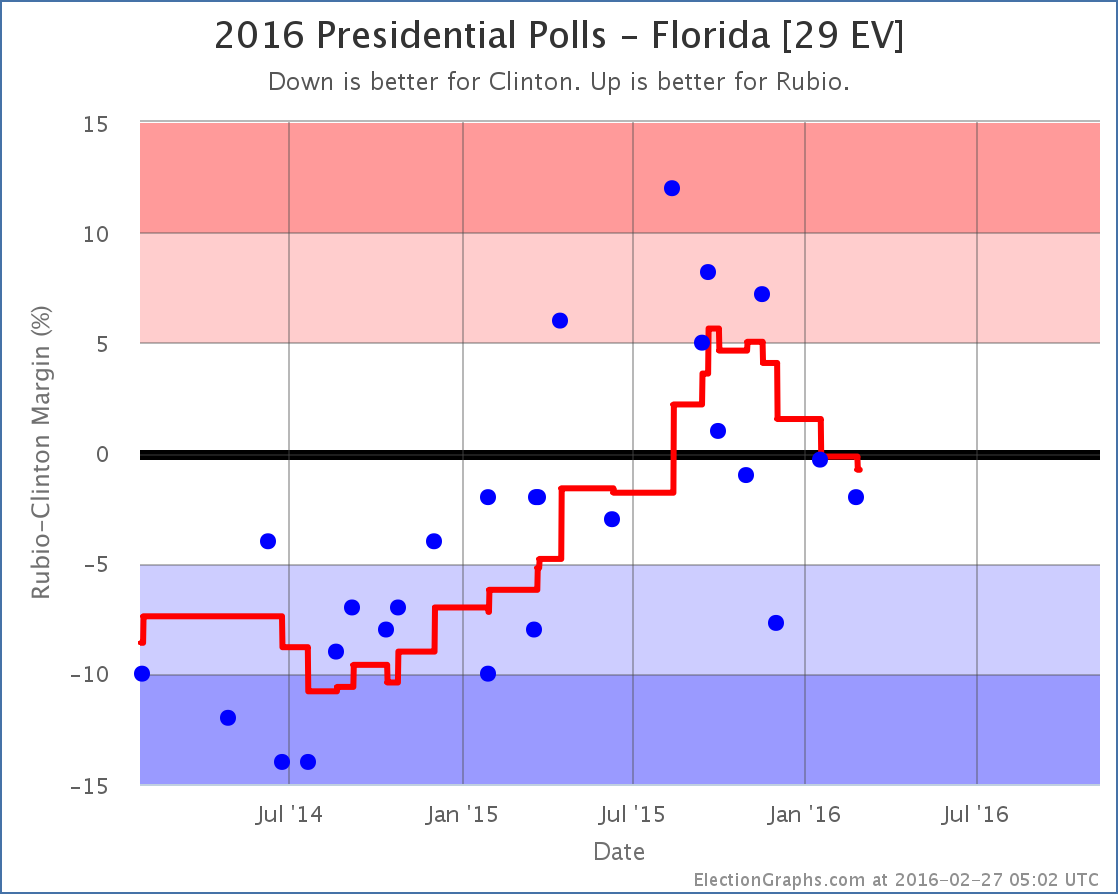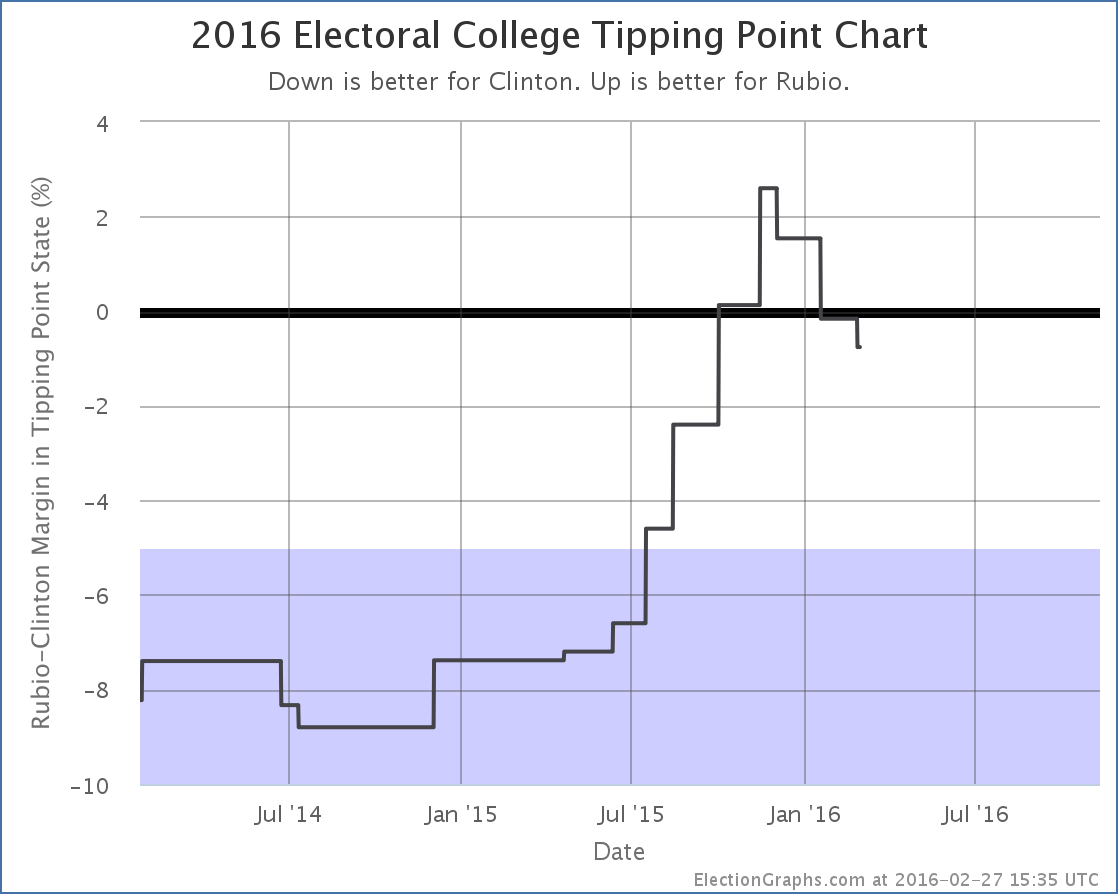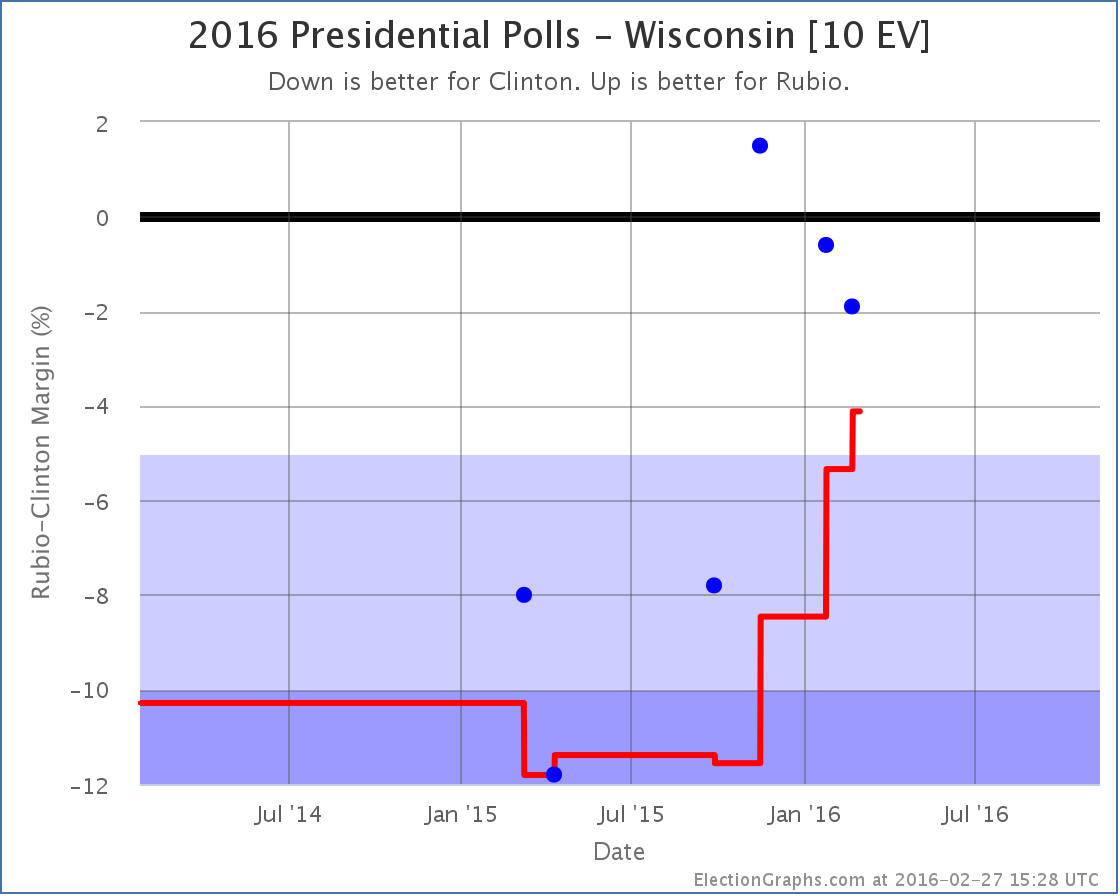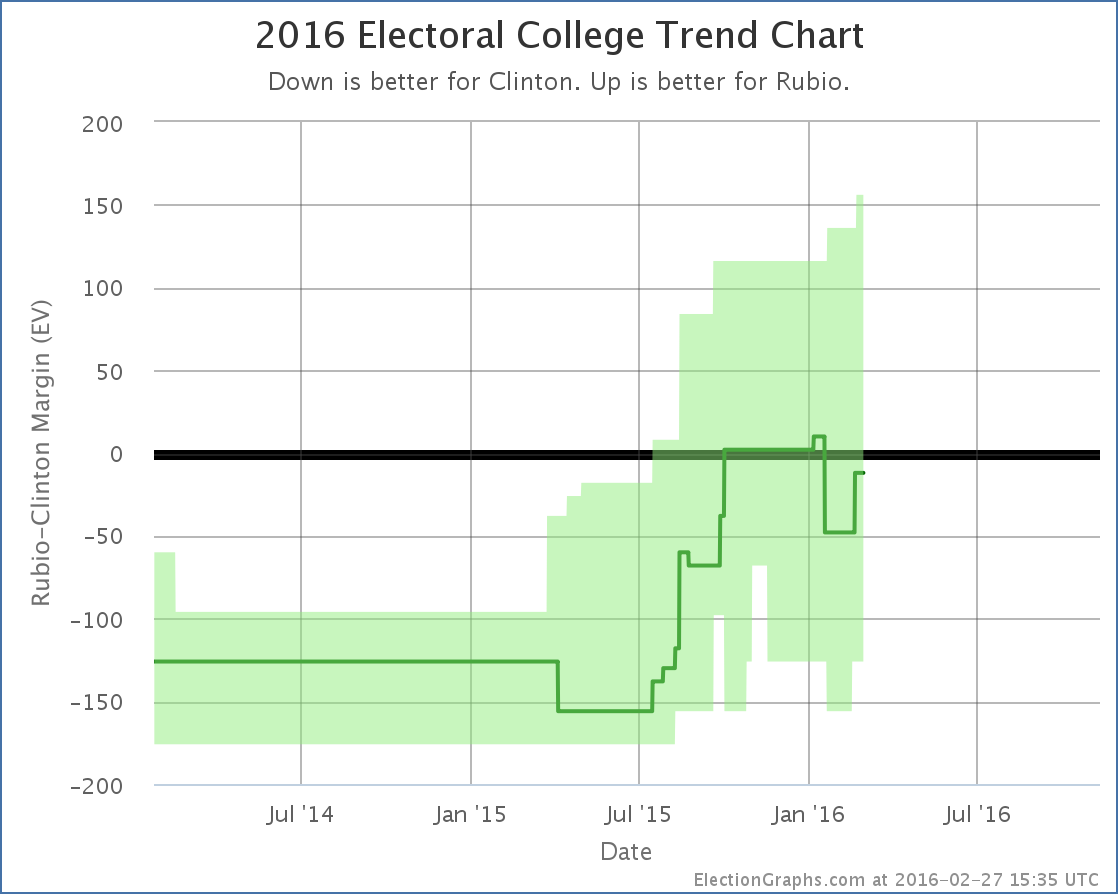As expected, Clinton easily won South Carolina. Clinton won 39 delegates, Sanders got 14.
Since my last post on the Democrats the tally has also added a net 10 superdelegates for Clinton, 1 for Sanders, and 1 straggler for O’Malley.
As of that last post, Sanders needed to get more than 55.03% of delegates to be on track to catch up with Clinton and win. Obviously that hasn’t happened with these updates. He got 23.08% of the delegates since that post.
So the end result is that the percentage of the remaining delegates Sanders needs to win goes up, while that number for Clinton goes down:
South Carolina is that slight acceleration of the curves starting at about 11.9%.
Sanders now needs 55.54% of the remaining delegates to catch up and win. (Or less if he starts flipping Clinton superdelegates to his side, but there has been no sign of that yet.)
Meanwhile, Clinton only needs 44.58% of the remaining delegates to win.
Frankly, in the 2008 and 2012 cycles once the frontrunner needed less than 45% of the delegates to win, it was time to start calling the race over. Yes, something happening that would allow a challenger to catch up and win is still possible. But it is unlikely. And with each additional contest where the challenger fails to make their own “% needed to win” mark, it gets harder.
But lets not consider it done quite yet. Super Tuesday is coming up in a few days. Maybe there is something there to indicate this isn’t over quite yet. Just as I did for the Republicans, lets game out what Super Tuesday looks like based on current polling. I’ll use the RCP poll averages, then try to estimate delegates based on the rules in each state.
Texas (222 delegates)
- Current poll averages: 59.9% Clinton, 33.6% Sanders
- Delegate estimates: 142 Clinton, 80 Sanders
Georgia (102 delegates)
- Current poll averages: 62.8% Clinton, 26.0% Sanders
- Delegate estimates: 72 Clinton, 30 Sanders
Virginia (95 delegates)
- Current poll averages: 54.5% Clinton, 35.0% Sanders
- Delegate estimates: 58 Clinton, 37 Sanders
Massachusetts (91 delegates)
- Current poll averages: 46.3% Sanders, 45.7% Clinton
- Delegate estimates: 46 Sanders, 45 Clinton
Minnesota (77 delegates)
- Current poll averages: 54.5% Clinton, 28.5% Sanders
- Delegate estimates: 51 Clinton, 26 Sanders
Tennessee (67 delegates)
- Current poll averages: 53.0% Clinton, 30.0% Sanders
- Delegate estimates: 43 Clinton, 24 Sanders
Colorado (66 delegates)
- Last poll from November so using national averages: 47.2% Clinton, 42.2% Sanders
- Delegate estimates: 35 Clinton, 31 Sanders
Alabama (53 delegates)
- Using only poll from February: 59% Clinton, 31% Sanders
- Delegate estimates: 35 Clinton, 18 Sanders
Oklahoma (38 delegates)
- Current poll averages: 45.0% Clinton, 36.0% Sanders
- Delegate estimates: 21 Clinton, 17 Sanders
Arkansas (32 delegates)
- Current poll averages: 57.0% Clinton, 28.5% Sanders
- Delegate estimates: 21 Clinton, 11 Sanders
Vermont (16 delegates)
- Current poll averages: 84.5% Sanders, 9.5% Clinton
- Delegate estimates: 16 Sanders
Democrats Abroad (13 delegates)
- No polls, using national averages: 47.2% Clinton, 42.2% Sanders
- Delegate estimates: 7 Clinton, 6 Sanders
American Samoa (6 delegates)
- No polls, using national averages: 47.2% Clinton, 42.2% Sanders
- Delegate estimates: 3 Clinton, 3 Sanders
OK. Adding all those up…
533 Clinton, 345 Sanders
Now, these are estimates based on relatively sparse polling and the assumption that candidate support is uniformly distributed within each state. The results will not be exactly like this.
But unless something major happens to change the picture in the next couple of days, the results on Tuesday should look broadly similar to this. With the estimate above, Sanders gets about 39.3% of the delegates. A far cry from the 55.5% he would need in order to actually improve his position against Clinton.
Adding the current delegates to the estimated Super Tuesday delegates, the new totals would be:
1,069 Clinton, 427 Sanders, 3 O’Malley
31.5% of the delegates will have been allocated. But 68.5% would still be available.
What would Sanders’ new “% of remaining needed to win” be at that point?
It would be 59.9%.
Sanders would need nearly 60% of the remaining delegates to catch up and win, or a massive defection of Clinton superdelegates to lower that number.
To imagine Sanders performing like this, you either have to believe the remaining states are vastly different in their preferences to the states that will have gone before (there is no evidence for this so far), or some massive seismic event would have to happen in the campaign to dramatically change minds of large numbers of Democratic voters in a very short timeframe.
A good argument could be made that absent a shocking surprise, this race is already done. After Super Tuesday, if the results are anything like the estimates above, then those hoping for a Sanders win will be grasping at the thinnest of straws. By the time we get to the end of March, again, absent that huge surprise, there will be no serious question any more.
Now, surprises do sometimes happen. You never know. But you don’t get to a Sanders win from here with just “normal” campaigning. It would take something bigger… a major Clinton scandal bigger than anything seen so far… a serious issue with Clinton’s health… something along those lines.
This doesn’t preclude Sanders staying in the race all the way until the convention and battling in every primary and caucus. He could do that if his cash flow holds out. But it would be to champion his issues and to try to move the party further in his direction, it would not be a serious attempt to win the nomination.
Three days from the time I post this, we’ll have Super Tuesday results and we’ll see just how close my poll based guestimates were and if this analysis holds up. More then…
[Update 2016-03-02 00:47 UTC – As a result of a final scan for superdelegates prior to adding Super Tuesday results we have a net change of +7 Clinton superdelegates, +2 Sanders superdelegates, -2 O’Malley superdelegates (they flipped to Clinton). This does not substantively change any of the analysis above and does not get a separate blog post, but a note here was warranted.]
Note: This post is an update based on the data on ElectionGraphs.com. Election Graphs tracks both a poll based estimate of the Electoral College and a numbers based look at the Delegate Races. All of the charts and graphs seen in this post are from that site. Additional graphs, charts and raw data can be found there. All charts above are clickable to go to the current version of the detail page the chart is from, which may contain more up to date information than the snapshots on this page, which were current as of the time of this post. Follow @ElectionGraphs on Twitter or like Election Graphs on Facebook to see announcements of updates or to join the conversation. For those interested in individual general election poll updates, follow @ElecCollPolls on Twitter for all the polls as they are added.
